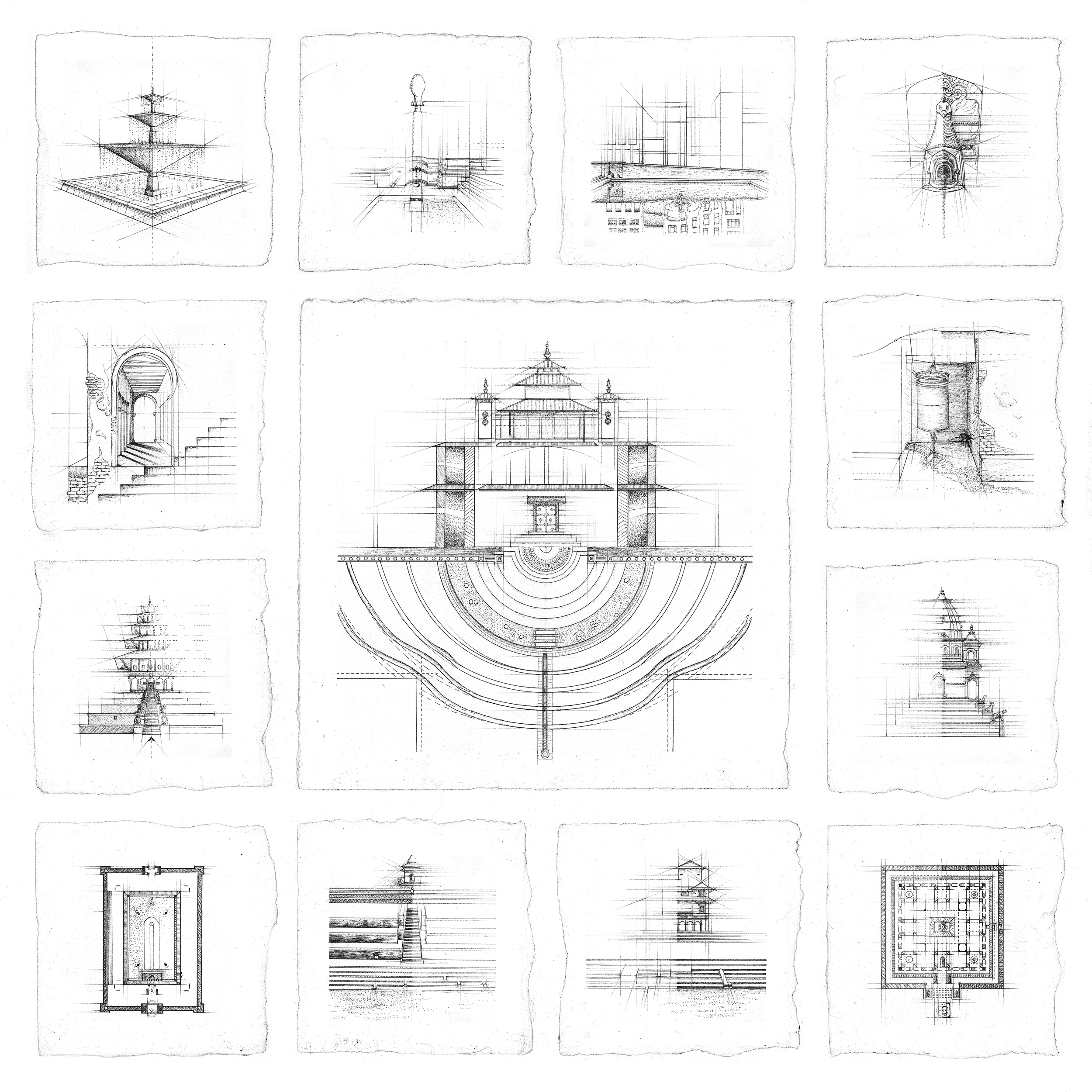

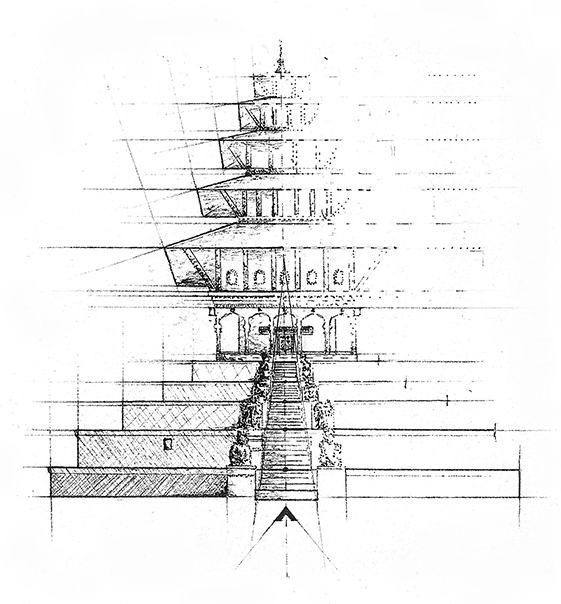


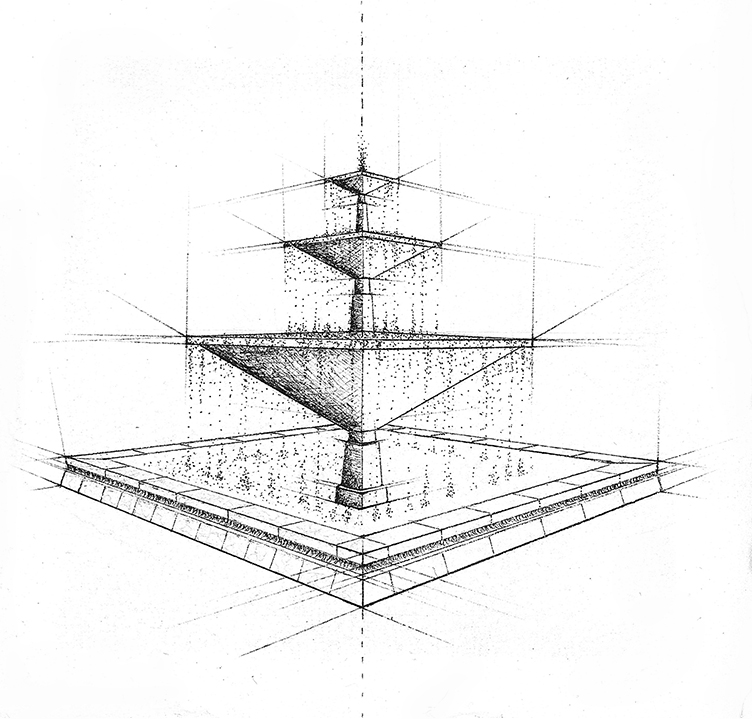

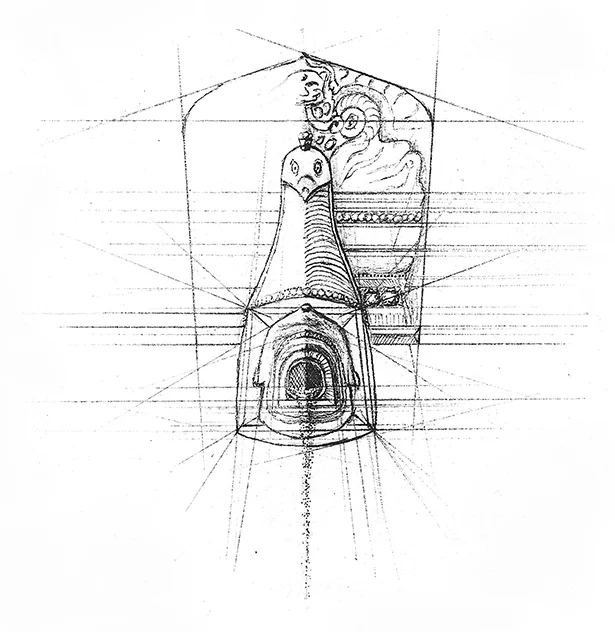
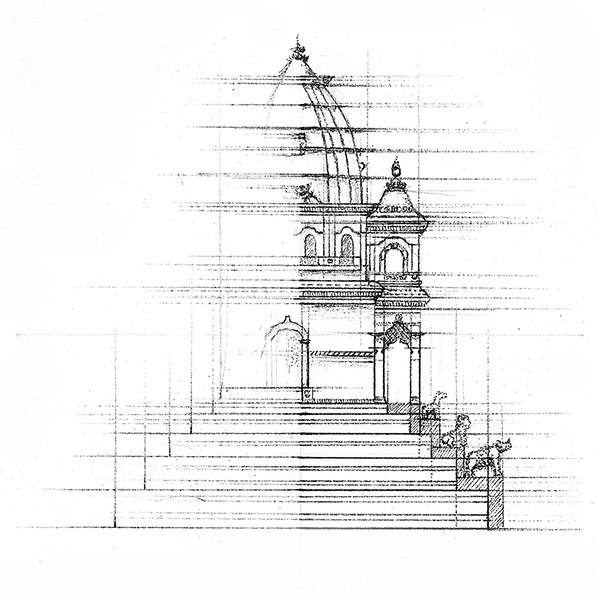
Your Custom Text Here
This series of drawings is a set of observations from a trip to Nepal + Tibet.
The Architecture in Nepal + Tibet is more than simply structure as conceived in the western vernacular; it is a marking stone exuding its own notion of presence while informing the energy and activity around it. I was interested in the amount of movement surrounding seemingly static architecture. Pilgrims travel thousands of miles to contribute as well as absorb the qualities of the environment. As such, the images are in halves; one side depicting the technical geometric forms while the other signals the more ephemeral qualities and life of the space.
Collectively, the renders became a motion study through the horizontal + vertical plane, exploring how the formal geometry controls the fluid movement on a range of scales and architectural subject matter. An exploration developed, demonstrating how waters’ properties + peoples’ behaviors react to the symmetry and forces at play.
The central drawing explores the ideas above: merging plan, section and elevation from the abstract to the literal taking organizational reference to the ubiquitous tanka drawings of the area. The bottom half is a portion of the “Garden of Dreams” of Kathmandu in plan view. Centered, the mountainous series of steps overlooking the garden radiates outward like ripples, while the surrounding formal geometry begins to effect the forms as if they were fluid.
Once abstracted, the overall framework below becomes a Mandala, the master plan of the Tibetan Samye Monastery presented in section above. The drawing explores the vertical movement of the pilgrims journey, with particular focus on the dark cavernous voids circulated through prior to entering lit center atrium. As a whole, the collection explores the ever present clockwise circumnavigation through which the pilgrims practice throughout their journeys and prayers.
This series of drawings is a set of observations from a trip to Nepal + Tibet.
The Architecture in Nepal + Tibet is more than simply structure as conceived in the western vernacular; it is a marking stone exuding its own notion of presence while informing the energy and activity around it. I was interested in the amount of movement surrounding seemingly static architecture. Pilgrims travel thousands of miles to contribute as well as absorb the qualities of the environment. As such, the images are in halves; one side depicting the technical geometric forms while the other signals the more ephemeral qualities and life of the space.
Collectively, the renders became a motion study through the horizontal + vertical plane, exploring how the formal geometry controls the fluid movement on a range of scales and architectural subject matter. An exploration developed, demonstrating how waters’ properties + peoples’ behaviors react to the symmetry and forces at play.
The central drawing explores the ideas above: merging plan, section and elevation from the abstract to the literal taking organizational reference to the ubiquitous tanka drawings of the area. The bottom half is a portion of the “Garden of Dreams” of Kathmandu in plan view. Centered, the mountainous series of steps overlooking the garden radiates outward like ripples, while the surrounding formal geometry begins to effect the forms as if they were fluid.
Once abstracted, the overall framework below becomes a Mandala, the master plan of the Tibetan Samye Monastery presented in section above. The drawing explores the vertical movement of the pilgrims journey, with particular focus on the dark cavernous voids circulated through prior to entering lit center atrium. As a whole, the collection explores the ever present clockwise circumnavigation through which the pilgrims practice throughout their journeys and prayers.